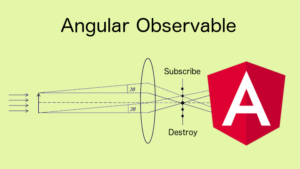Unit testing is a crucial aspect of ensuring that your Angular applications are reliable, maintainable, and bug-free. Jest, a popular testing framework, has become a favorite among developers due to its simplicity and powerful features. In this article, we’ll explore how to unit test Angular components using Jest, with practical examples to guide you through the process.
Why Jest for Angular?
Jest is a JavaScript testing framework that provides a great developer experience with features like:
- Fast and Parallel Test Execution: Jest runs tests in parallel, making the testing process faster.
- Snapshot Testing: Automatically compares the output of components with previously stored snapshots.
- Zero Configuration: Jest works out of the box for most JavaScript projects.
- Mocking Capabilities: Jest simplifies mocking dependencies, making it easier to test isolated components.
Setting Up Jest in an Angular Project
Before we dive into unit testing, let’s set up Jest in your Angular project.
- Install Jest and Related Packages:Run the following command to install Jest,
ts-jest(TypeScript support for Jest), andjest-preset-angular(Angular-specific configurations):
npm install --save-dev jest @types/jest ts-jest jest-preset-angular
2. Configure Jest:
Create a jest.config.js file in the root of your project with the following content:
module.exports = {
preset: 'jest-preset-angular',
setupFilesAfterEnv: ['<rootDir>/src/setup-jest.ts'],
testPathIgnorePatterns: ['/node_modules/', '/dist/'],
globals: {
'ts-jest': {
tsconfig: 'tsconfig.spec.json',
stringifyContentPathRegex: '\\.html$',
},
},
transform: {
'^.+\\.(ts|html)$': 'ts-jest',
},
transformIgnorePatterns: ['node_modules/(?!@ngrx)'],
};
3. Create setup-jest.ts:
This file is used to set up the Angular testing environment. Create setup-jest.ts in the src folder:
import 'jest-preset-angular/setup-jest';
4. Update tsconfig.spec.json:
Ensure that tsconfig.spec.json includes Jest types:
{
"compilerOptions": {
"types": ["jest"]
}
}
Now that Jest is set up, let’s start writing tests for Angular components.
Writing Unit Tests for Angular Components
Consider an Angular component CounterComponent that has a simple counter functionality.
import { Component } from '@angular/core';
@Component({
selector: 'app-counter',
template: `
<h1>{{ count }}</h1>
<button (click)="increment()">Increment</button>
<button (click)="decrement()">Decrement</button>
`,
})
export class CounterComponent {
count = 0;
increment() {
this.count++;
}
decrement() {
this.count--;
}
}
We’ll write unit tests for this component using Jest.
- Test Setup:Create a test file named
counter.component.spec.ts:
import { ComponentFixture, TestBed } from '@angular/core/testing';
import { CounterComponent } from './counter.component';
describe('CounterComponent', () => {
let component: CounterComponent;
let fixture: ComponentFixture<CounterComponent>;
beforeEach(() => {
TestBed.configureTestingModule({
declarations: [CounterComponent],
}).compileComponents();
fixture = TestBed.createComponent(CounterComponent);
component = fixture.componentInstance;
});
it('should create the component', () => {
expect(component).toBeTruthy();
});
});
This basic setup creates a testing module, compiles the component, and initializes it before each test.
2. Testing Initial State:
Test that the initial count is zero:
it('should have an initial count of 0', () => {
expect(component.count).toBe(0);
});
3. Testing Increment Functionality:
Test that the increment method increases the count:
it('should increment the count', () => {
component.increment();
expect(component.count).toBe(1);
});
4. Testing Decrement Functionality:
Test that the decrement method decreases the count:
it('should decrement the count', () => {
component.increment(); // Increment first to avoid negative values
component.decrement();
expect(component.count).toBe(0);
});
5. Testing DOM Interaction:
Test that clicking the buttons triggers the correct methods:
it('should increment when the increment button is clicked', () => {
const incrementButton = fixture.nativeElement.querySelector('button:first-child');
incrementButton.click();
expect(component.count).toBe(1);
});
it('should decrement when the decrement button is clicked', () => {
component.increment(); // Ensure count is 1 before decrement
const decrementButton = fixture.nativeElement.querySelector('button:last-child');
decrementButton.click();
expect(component.count).toBe(0);
});
Running the Tests
To run the tests, simply use the following command:
npm run test
Jest will execute all the tests and provide feedback in the terminal.
Conclusion
Unit testing Angular components with Jest offers a streamlined and efficient way to ensure your components work as expected. By following the steps outlined in this article, you can set up Jest in your Angular projects and start writing unit tests with confidence. The combination of Angular and Jest can help you maintain high-quality code, catch bugs early, and deliver more reliable applications.
Tags
#Angular #Jest #UnitTesting #JavaScript #WebDevelopment #TestingFramework #FrontendDevelopment #SoftwareQuality #DevOps #Coding #Programming #AngularTestin





